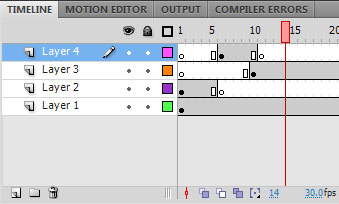

- #MAINSTAGE 3.3 FLASHING SCREEN MOVIE#
- #MAINSTAGE 3.3 FLASHING SCREEN INSTALL#
- #MAINSTAGE 3.3 FLASHING SCREEN PATCH#
Battery life varies by use and configuration.
#MAINSTAGE 3.3 FLASHING SCREEN MOVIE#
The Apple TV app movie playback test measures battery life by playing back HD 1080p content with display brightness set to 8 clicks from bottom. Testing conducted by Apple in October 2020 using preproduction 13-inch MacBook Pro systems with Apple M1 chip, 8GB of RAM, and 512GB SSD.Testing conducted by Apple in October 2020 using preproduction MacBook Air systems with Apple M1 chip and 8-core GPU, configured with 8GB of RAM and 512GB SSD.1TB = 1 trillion bytes actual formatted capacity less.iPhone activation required on iPhone purchases made at an Apple Store with one of these national carriers: AT&T, Sprint, Verizon, or T-Mobile. ACMI is not available for purchases made online at the following special stores: Apple Employee Purchase Plan participating corporate Employee Purchase Programs Apple at Work for small businesses Government, and Veterans and Military Purchase Programs, or on refurbished devices. See the Apple Card Customer Agreement for more information. Taxes and shipping are not included in ACMI and are subject to your card’s variable APR. If you choose the pay-in-full or one-time-payment option for an ACMI eligible purchase instead of choosing ACMI as the payment option at checkout, that purchase will be subject to the variable APR assigned to your Apple Card. Variable APRs for Apple Card other than ACMI range from 11.24% to 22.24% based on creditworthiness. See for more information about eligible products. * Apple Card Monthly Installments (ACMI) is a 0% APR payment option available to select at checkout for certain Apple products purchased at Apple Store locations,, the Apple Store app, or by calling 1-800-MY-APPLE, and is subject to credit approval and credit limit.
#MAINSTAGE 3.3 FLASHING SCREEN INSTALL#
Since the primary factor determining the lowest possible setting is your Core Audio driver, it is a good idea to revisit this setting if you change to a different audio interface or install an updated driver for your current interface. Once you have determined the best buffer settings, try lowering the Driver Latency setting to further reduce the overall latency of your system.If the lowest I/O Buffer Size setting you can use gives too much latency for you to perform comfortably, try setting it to the next size lower and enable the I/O Safety Buffer.Keep in mind that this is influenced not only by the processing power of your computer, but by the type and number of plug-ins and simultaneous number of channel strips you use. Determine the lowest I/O Buffer Size you can use without any audio dropouts or glitches.
#MAINSTAGE 3.3 FLASHING SCREEN PATCH#
Load the most CPU intensive patch you intend to use when you perform.To start, leave the I/O Safety Buffer off and keep the Driver Latency slider to its right-most and maximum setting:

Minimizing latency in MainStage 3Ī good strategy for finding the optimal combination of settings is to start at the top of the Advanced Audio Settings panel and work your way down. If the computer is unable to completely process one buffer before the next is needed, you hear glitches and dropouts in the audio signal. However, because the computer has less time before the next buffer must be processed, it requires more processing power than larger buffer sizes would need. Smaller buffers lead to less latency, because the computer is passing audio to the Core Audio driver more frequently. The size of these buffers determines the amount of latency introduced. To accomplish this, the audio is divided into chunks, known as buffers. MainStage (or any other audio software) needs some time to process audio data before it can be passed on to the Core Audio driver. With digital audio there is also latency, and in this case it's caused by buffering. The further away the sound source, the more latency. In the natural world, latency is caused by physical distance from the sound source. Audio latency is the phenomenon of sound reaching the ear at some point after it was created.


 0 kommentar(er)
0 kommentar(er)
